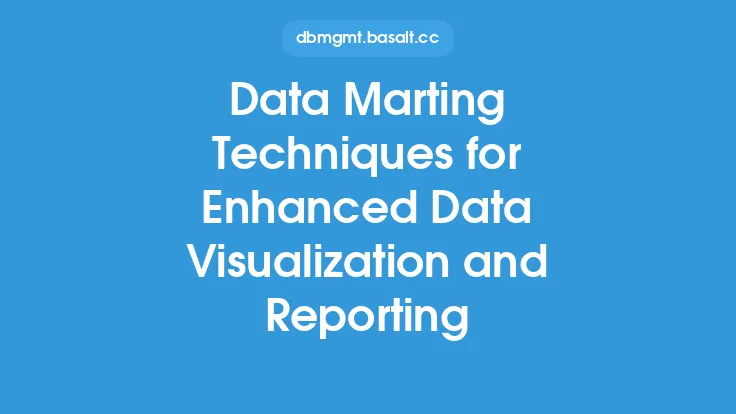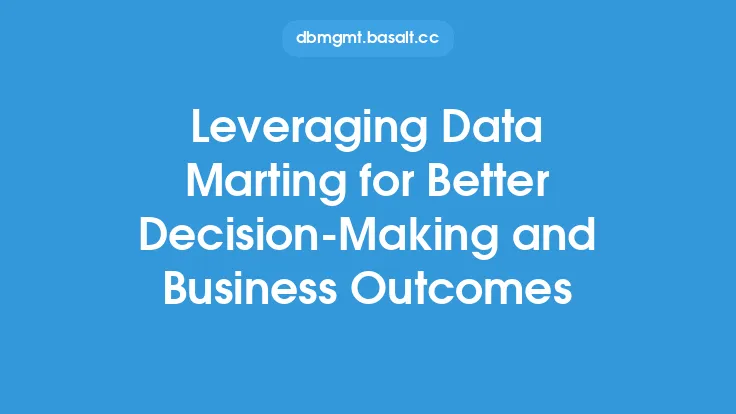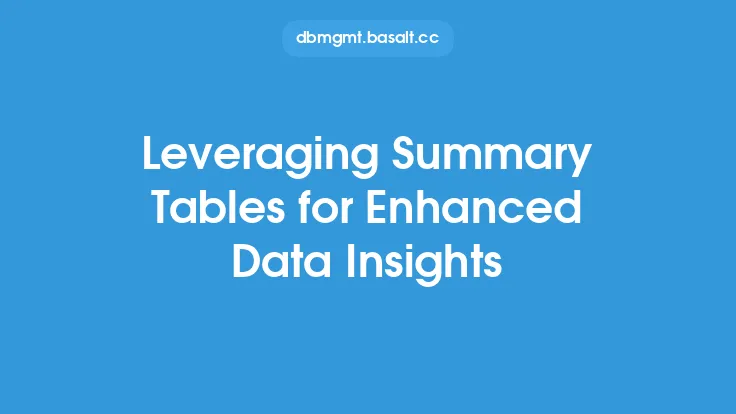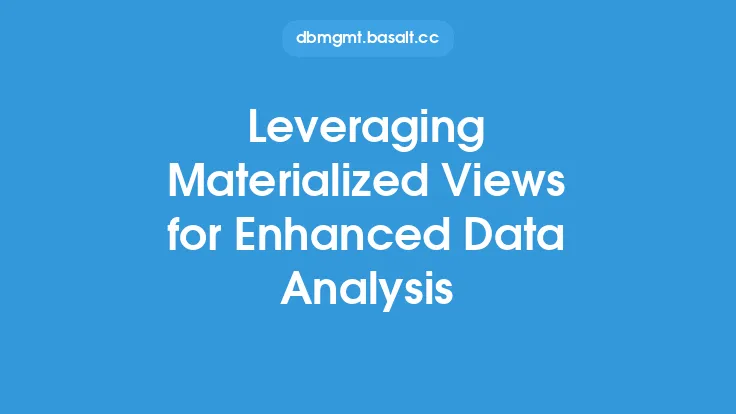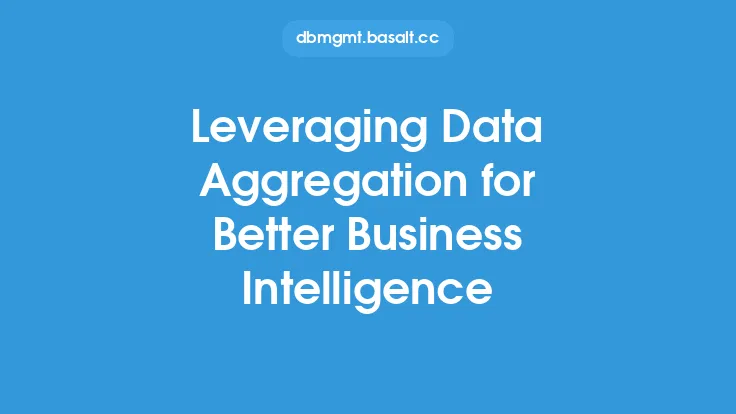Data transformation is a crucial step in the data analysis process, as it enables the conversion of raw data into a format that can be easily understood and visualized. The primary goal of data transformation is to enhance the quality and usability of the data, making it possible to extract valuable insights and meaningful patterns. In the context of data visualization, data transformation plays a vital role in preparing the data for visual representation, allowing users to gain a deeper understanding of the data and make informed decisions.
Introduction to Data Transformation
Data transformation involves a series of processes that aim to modify the raw data into a more suitable format for analysis and visualization. This can include data cleaning, data normalization, data aggregation, and data feature engineering. The transformation process depends on the type of data, the desired outcome, and the tools and techniques used. For instance, numerical data may require normalization or scaling to ensure that all values are on the same scale, while categorical data may need to be encoded or transformed into numerical values.
Data Transformation Techniques
There are various data transformation techniques that can be applied to enhance data visualization. Some common techniques include:
- Data aggregation: This involves combining multiple values into a single value, such as calculating the mean or sum of a set of numbers.
- Data normalization: This technique scales the data values to a common range, usually between 0 and 1, to prevent differences in scales from affecting the analysis.
- Data feature engineering: This involves creating new features or variables from existing ones to improve the quality and relevance of the data.
- Data encoding: This technique converts categorical data into numerical values, allowing for easier analysis and visualization.
Data Visualization and Data Transformation
Data visualization is the process of creating graphical representations of data to facilitate understanding and insight. Data transformation is essential for effective data visualization, as it enables the creation of informative and engaging visualizations. By transforming the data into a suitable format, users can create visualizations that reveal patterns, trends, and relationships in the data. Some common data visualization tools and techniques include:
- Scatter plots: These plots display the relationship between two variables, often used to identify correlations and patterns.
- Bar charts: These charts compare categorical data across different groups, often used to display distributions and frequencies.
- Heatmaps: These visualizations display the relationship between two variables, often used to identify clusters and patterns.
Benefits of Data Transformation for Data Visualization
The benefits of data transformation for data visualization are numerous. Some of the key advantages include:
- Improved data quality: Data transformation helps to ensure that the data is accurate, complete, and consistent, leading to more reliable visualizations.
- Enhanced data insights: By transforming the data into a suitable format, users can gain a deeper understanding of the data and extract valuable insights.
- Increased efficiency: Data transformation enables the creation of automated visualizations, reducing the time and effort required to analyze and visualize the data.
- Better decision-making: By providing a clear and accurate representation of the data, data transformation enables users to make informed decisions and drive business outcomes.
Tools and Technologies for Data Transformation
There are various tools and technologies available for data transformation, including:
- Programming languages: Such as Python, R, and SQL, which provide a range of libraries and functions for data transformation.
- Data transformation software: Such as Excel, Tableau, and Power BI, which offer built-in data transformation capabilities.
- Data integration platforms: Such as Apache NiFi, Talend, and Informatica, which provide a range of data transformation tools and techniques.
- Cloud-based services: Such as Amazon Web Services, Microsoft Azure, and Google Cloud Platform, which offer a range of data transformation services and tools.
Best Practices for Data Transformation
To ensure effective data transformation, it is essential to follow best practices, including:
- Data quality checks: Verify the accuracy and completeness of the data before transformation.
- Data documentation: Maintain detailed documentation of the transformation process, including the techniques and tools used.
- Data validation: Validate the transformed data to ensure that it meets the required standards and formats.
- Data security: Ensure that the transformed data is secure and protected from unauthorized access.
Conclusion
Data transformation is a critical step in the data analysis process, enabling the creation of informative and engaging visualizations. By applying various data transformation techniques, users can enhance the quality and usability of the data, leading to valuable insights and better decision-making. As data continues to grow in volume and complexity, the importance of data transformation will only continue to increase, making it essential for organizations to invest in data transformation tools and techniques to stay ahead of the curve.

